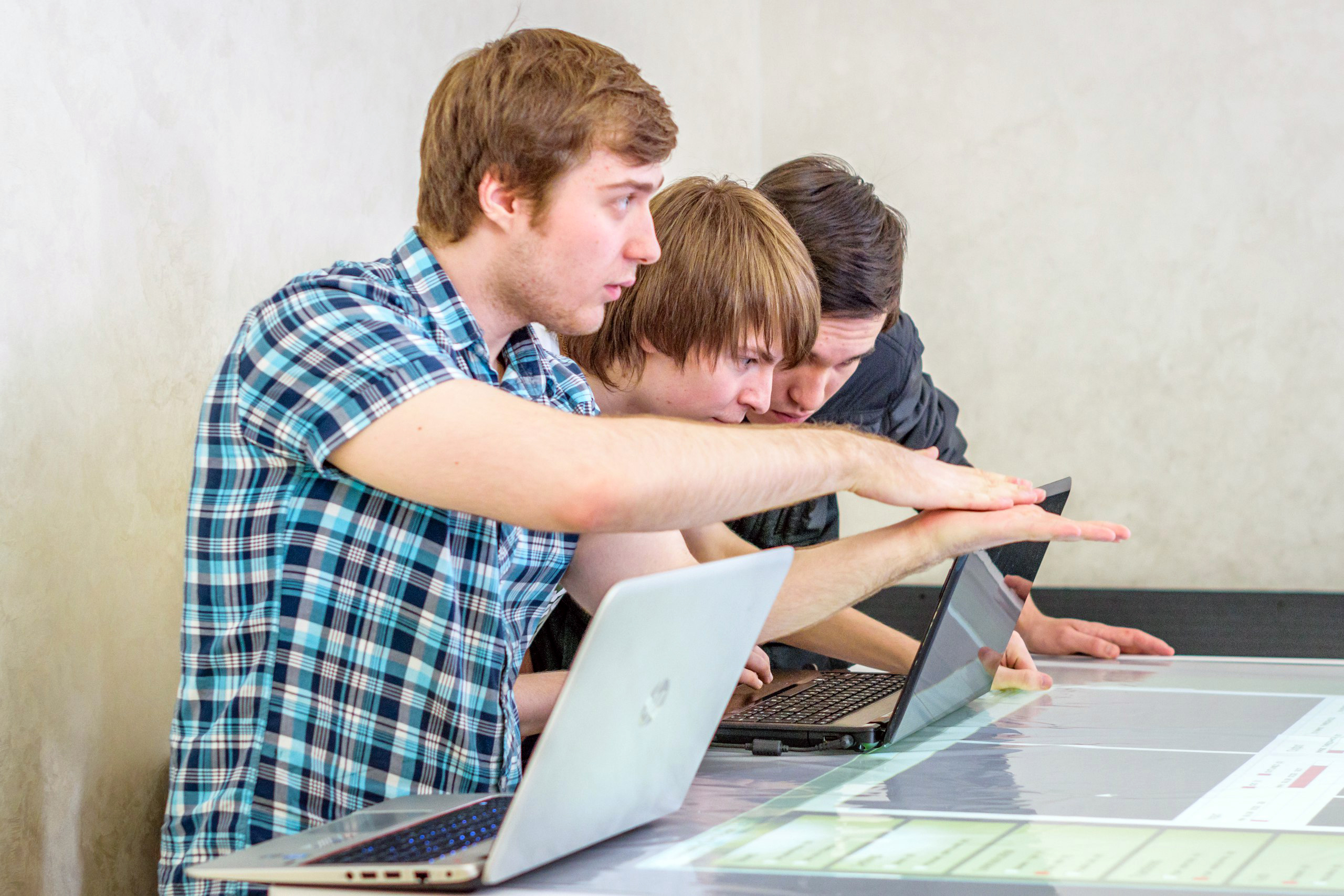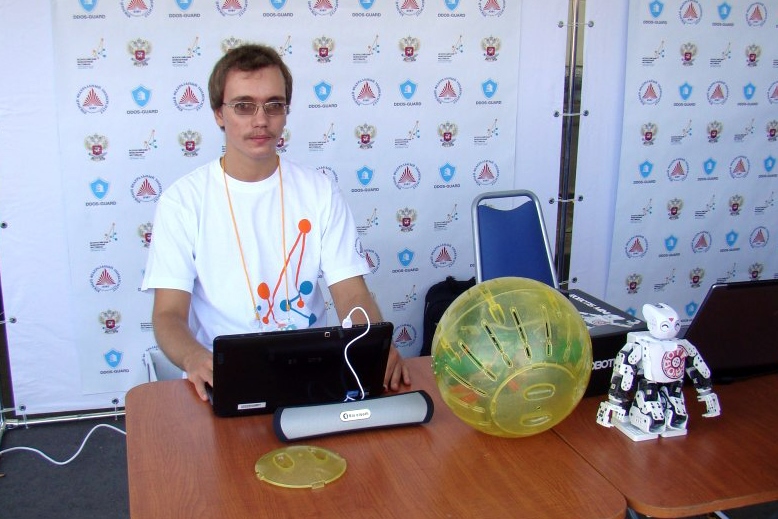A Robot, a Super Table, and Cultured Dairy – What HSE Students Are Inventing
Several students from the Higher School of Economics have developed innovative engineering and computer technologies for business, and their unique inventions have won them grants from the UMNIK programme, which is organised by the Innovation Support Foundation.
The UMNIK programme provides support to young researchers and developers whose projects are not just interesting in the technological sense, but can also be commercialised. The competition is held in five categories – from instrumentation engineering and materials science to medicine and biotechnology. The winners of the competition receive a two-year grant of 500,000 rubles.
How to Penetrate the Consumer’s Brain
Andrei Kislov, an undergraduate student in the Psychology programme, worked on a project in the field of biology. ‘Initially, when I was in high school, I focused on biology and neurobiology,’ Andrei says. ‘On the one hand, I was interested in the brain’s structure and how it works. On the other hand, I liked business, entrepreneurship, and sales, and I dreamed of studying both.’
He was able to combine his two interests at HSE thanks to the School of Psychology, which conducts research on neuroeconomics. ‘I mostly studied the neurobiology behind decision-making and a field called the neurology of value, which focuses on how the concept of value is coded in the brain, how the areas of the brain are connected to the formation of value, and how this can be influenced,’ Andrei adds. ‘At one point, it hit me that value can be measured using specific neurobiological methods; that is, a technology can be created to determine the subjective cost of an item. This is how fundamental neurobiological developments were transformed into a consumer behaviour research tool.’
Andrei Kislov and his colleagues at the Brain Company laboratory have also begun working on another area of neuromarketing research – gaming. Together with Mail.ru, they conducted neurological research on computer games.
 Alexander Shebanin, a master’s student in the MIEM Computer Systems and Network programme, and his project – a multitouch table.
Alexander Shebanin, a master’s student in the MIEM Computer Systems and Network programme, and his project – a multitouch table.
An iPad-Like Table
Alexander Shebanin, a master’s student in the MIEM Computer Systems and Network, created a multitouch table. The project began as part of his thesis work during his last year of undergrad. Subsequent development, he says, was thanks to his academic supervisor Leonid Voskov and his mentor Alexey Rolich, who also helped him prepare for the UMNIK competition.
‘Practically all of the devices that we interact with today have touch screens – smartphones, tablets, and even some laptops,’ Alexander says, describing how the idea behind his ‘super table’ came about. ‘We have already gotten used to the common gestures used when operating the [devices], which is why the appearance of a large selection of touch-screen devices is just a matter of time. The relevance of this project, its future prospects, and the fact that a team of like-minded individuals (three people worked on the project) were creating something cool and unusual – this all motivated me.’
Alexander’s project consists of a multitouch table with a large touch surface; it can also be described as a ‘large stationary iPad’ with a pseudo-holographic subsystem (pyramid). The novelty of the project lies in the fact that special software was created for interacting with the pseudo-hologram, and there is special software for demonstrating the capabilities of the table as well.
Engineers to the Farm
MIEM is also working on different types of technologies that are already being applied in not just manufacturing, but in agriculture as well. Mikhail Loginov, a master’s student in the Electronic Engineering programme, worked on a project that is at the interface of automation and another passion of his – cooking. With the support of his academic supervisor Ilya Ivanov, Mikhail began developing a mobile system for producing cultured dairy foods.
‘We had received an order from a farmer for a similar device,’ Mikhail explains. ‘Our visit to his farm made us think of how to put the knowledge we had acquired at the university into practice. In the end, we decided to create a mobile device for cultured dairy production.
‘Farming is one of the few fields that receives active support right now, and we chose a fairly narrow area to specialise in – small farms,’ Mikhail continues. Large automated systems aren’t suitable for them, so the task was to think of something mobile.’ As a result, Mikhail was able to create a universal device with a simpler body that is adequate for the containers that farmers already use in the creamery.’
 Evgeny Lezhnev, a master’s student in the MIEM Computer Systems and Network programme, and his project – a spherical robot.
Evgeny Lezhnev, a master’s student in the MIEM Computer Systems and Network programme, and his project – a spherical robot.
Kolobok or Droid?
Evgeny Lezhnev, also a master’s student in the MIEM Computer Systems and Network programme, came up with the idea of a spherical robot for hackathon, which took place at Technopolis Moscow in September 2015. Evgeny did not stop there, however, and decided to see what other solutions exist for such ‘atypical’ robots. It turned out that though each of them had undeniable advantages, there were certain shortcomings as well. One robot might be very large, one might be clumsy, and one might only be able to function as a toy.
‘I work alongside by classmate Aleksandr Amerikanov, and we decided to try getting rid of all of the limitations of the constructions and offer a universal solution that would encompass a wide range of applications,’ Evgeny explains.
As for potential applications, the robots could be used to patrol various territories, as the spherical structure makes the robots rather mobile and manoeuvrable, and they can change direction quickly. The spherical shape also allows the robots to move under any weather conditions or surface; all of the robots’ components are isolated from the outside environment, meaning that the robots will not be afraid of dirt or water. Devices can also be developed whose engines use the spherical robots’ technologies. The robots can be adapted, for example, to act as self-contained wheels mounted to various types of devices.
‘But we are also not opposed to a more “entertaining” application as well,’ Evgeny adds. ‘It’s easy to make the robot look like a character from a movie or fairytale – from Kolobok to the BB-8 droid from the latest Star Warsfilm.
A Programme that Helps Doctors
Artur Chakhvadze is a student in the Applied Mathematics and Information Science programme of the Faculty of Computer Science, and he has also completed internships at the Scientific Centre of Neurology and the Laboratory for Functional Morphochemistry. The lab uses rats to study various brain pathologies. The rats are given a certain medicine, and then researchers study the changes that take place in the brain cells. In order to analyse these changes, a portion of the brain has to be ‘photographed,’ the cells identified, and calculations made, and then the data is put into tables.
‘Since one photograph might contain several hundred cells and it is a painstaking process to identify them all in the photograph, we needed to develop an algorithm that would do this automatically,’ Artur says. ‘I developed this algorithm, and it works quite well.’
Now a new task stands before the team. The current algorithm is ‘set up’ to segment only these types of cells, but the algorithm must become more universal. Machine learning will assist with this, and this is what Artur is studying at HSE. ‘We want to create a system that will allow biologists to put a set of segmented sample photographs into a programme so the programme can use these photographs to ‘learn.’ Then the programme will be able to independently produce the segmentation of the new samples,’ Artur concludes.

